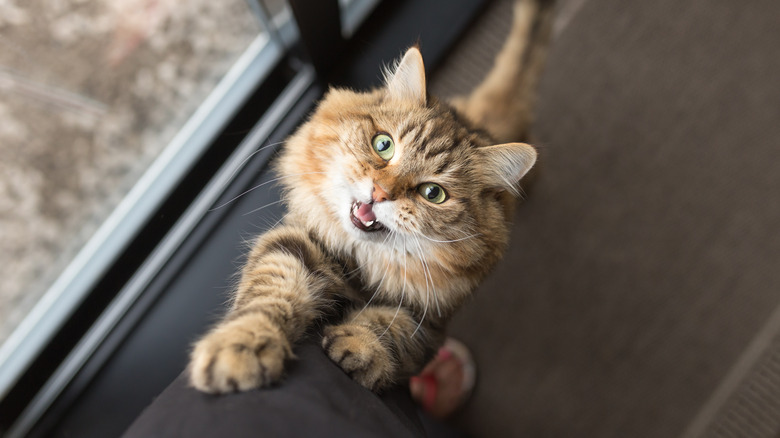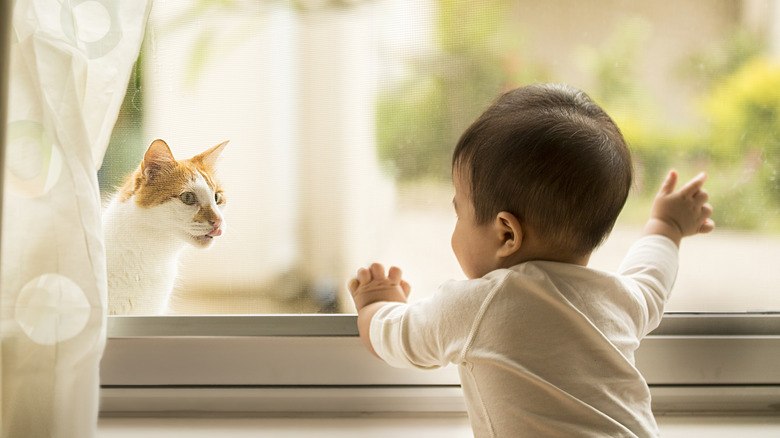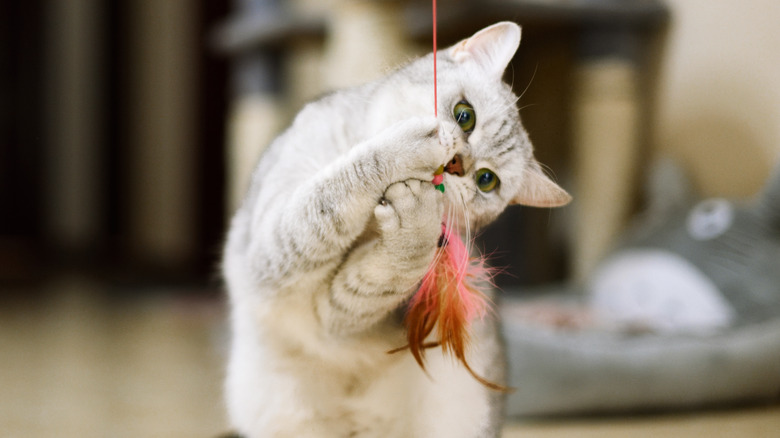Here's What It Means If Your Cat Chirps At You
Whether or not your feline is a "chatty catty," there's a good chance you've heard them produce the unique trilling staccato of cat chirping, similar to chattering. This distinct and high-pitch sound, performed with a mostly closed mouth, does not mean that your cat DJ's record is skipping. Yet it's clear that these vocalizations aren't the usual pet-me or feed-me meows. Cats chirp when they're excited or focused. Unlike teeth grinding, which can signal dental issues, chirping is generally a sign of happiness or anticipation.
Cat chirping, with its clicking noise, might remind you of a bird's call — fitting since it often happens when cats spot potential prey, like birds in a window. Although not all cats chirp, those that do are showing you a glimpse of their playful or focused mood. Still, you may find it odd when your cat turns that chirp directly at you. However, we got you covered as we decode what this behavior means and how you should respond to it.
Why do cats chirp at humans?
When your cat chirps at you, they're likely trying to communicate something positive. A chirp can be your cat's way of saying hello. If they chirp when you come home or enter a room, it's likely they are trying to communicate to you their joy and affection. Similarly, chirping might mean they want you to notice them — whether it's for a cuddle, play session, or meal.
While it's true that cats chirp when they spot prey, it helps to keep in mind this behavior stems from their natural hunting drive and excitement. In other words, if they're chirping at you, there's no need to worry they're misidentifying you as food! Chirping is also believed to be an instinctive behavior passed down from mother cats, who use it to guide their kittens. Your feline friend may chirp to guide you, too.
How do we know that cat chirping is a feline expression of positivity? A 2019 study conducted by Fermo et al. examined cat vocalizations other than meowing (VOM) in both pleasant and aversive situations. The research revealed that specific VOMs, including chirps and trills, were exclusively observed in positive contexts, such as during interactions with a favorite snack. Notably, no vocalizations of this kind were recorded in aversive situations, such as car rides or other stress-inducing environments. The study also found that 35% of cats exposed to a pleasant stimulus produced these happy vocalizations, emphasizing their association with positive emotions.
How to respond to cat chirping sounds
When your cat chirps, it's often a sign they're feeling social and content, making it a perfect opportunity to strengthen your bond. You can respond by showing them attention through petting, gentle words, or interactive play. Chirping is their way of inviting connection, so engaging with them helps nurture your relationship. You can also incorporate daily playtime with your cat that involves toys that mimic prey, like feather wands or laser pointers, to channel their hunting instincts. This will also provide them with mental stimulation and exercise.
However, if your cat's chirping is accompanied by unusual behaviors, such as drooling or aggression, it may be a cause for concern. In these cases, consulting a veterinarian can help rule out any underlying health issues. Fortunately, it's far more common that your cat's chirps are their charming way to communicate their joie de vivre.


